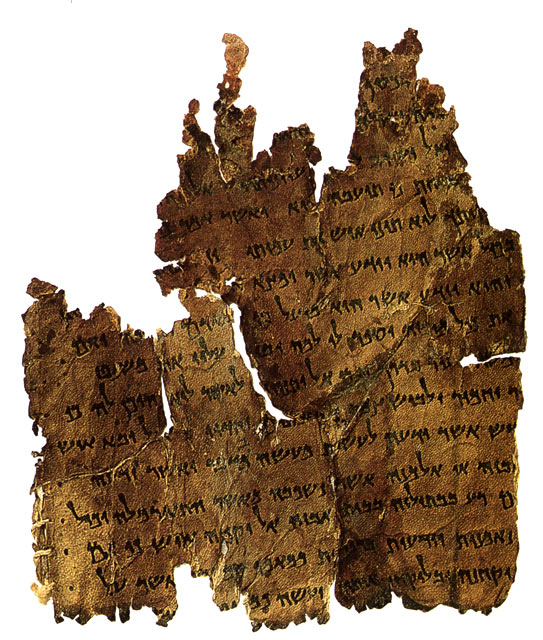Sixty-four clues. A vast treasure two thousand years old. Billions of dollars in buried gold. All engraved on a copper scroll hidden away in a cave near the Dead Sea that was found in 1952.
WHAT’S MISSING
Ancient gold treasure.
The Dead Sea Scrolls, discovered in caves at Qumran, near the Dead Sea, in the 1940s and 1950s, contain an extensive archive of Jewish texts dating back two thousand years. One scroll was made entirely of engraved copper, and contained a list of 64 clues and locations to a vast, hidden treasure. None of it has ever been found.
WHY WE CARE
The Dead Sea Scrolls illuminated our understanding of the Second Temple era of Jewish history, offering up priceless insights into Jewish life, thought, religion, and politics. They divulged a power struggle amongst numerous Jewish sects in relation to the Roman occupation; but also that pretty much all the Jewish groups revered the same biblical texts while following different interpretations. The Scrolls revealed biblical texts to us a thousand years older than what we had previously. It was a remarkable find that continues offering up valuable knowledge today. Plus there’s that treasure: in all, the 64 clues add up to billions of dollars in buried gold and silver.
THEORIES ABOUT THE TREASURE
Most scholars think the Dead Sea Scrolls were written by the Essenes, an ascetic Jewish sect living in Judean Desert that practiced extreme religiosity and communal living. Some dispute that, but truly mysterious is the origin of the treasure:
Theory 1: the treasure is from the First Temple in Jerusalem, which was destroyed by the Babylonians in 586 BCE. It contains such priceless relics as the Ark of the Covenant and gold plundered from Egypt during the Exodus. Unlikely — no historical sources suggest that treasure survived.
Theory 2: the treasure is from the Essenes themselves, who accumulated it through taxation or their local economy. Also unlikely — they lived in extreme poverty.
Theory 3: it comes from the Second Temple and was hidden away before the Romans sacked the city and destroyed the Temple in 70 CE. But we know that Rome actually made off with a significant portion of the Temple treasure that year, so it’s unlikely that so much managed to be buried.
Theory 4: the treasure doesn’t really exist — the Copper Scroll is just a legend in the vein of an ancient fantasy novel. But given that it only contains clues and no plot, characters, or other storyline, it’s hard to imagine it was just a work of fiction.
FUN FACTS
The Dead Sea Scrolls were found by accident in 1947, when an Arab shepherd boy stumbled into a cave while looking for a lost sheep.
The Scrolls contain over 950 manuscripts — including every book of the Hebrew Bible except for the Book of Esther — across tens of thousands of scraps of parchment, some only as large as a few millimeters across.
The Copper Scroll’s metal was so hardened after two thousand years that it couldn’t be unrolled. A special lab in England sliced it into 23 separate strips that could be turned over and deciphered.
Most of the Dead Sea Scrolls are today housed at the Shrine of the Book at the Israel Museum in Jerusalem.
© Jason Harris 2019
A Dead Sea Scroll fragment. Photo credit: Wikipedia
A strip of the Copper Scroll. Photo credit: Wikipedia
Music
The Lumineers, “Dead Sea” Spotify
Edwin Orion Brownell, “The Ein Gedi Suite 1” Spotify
Lehakat Hanajal, “Shir Ha Reut”


